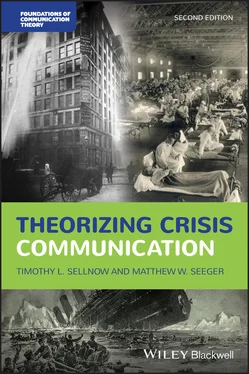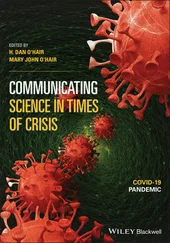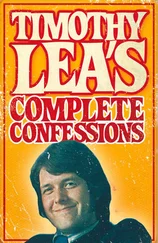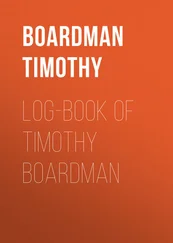Table 2.1Meta-Theoretical Elements of Crisis Communication.
| Ontology:High uncertaintyImmediacyThreatDisruption and chaosEmotional Responses: fear, dread, anxietyAxiology:Ethics of significant choice and right to knowEthic of careAutonomyBeneficenceEpistemology:Diverse kinds of knowledgeExperiencesEmpiricalCriticalQualitativeMethodology:Case Studies: thick description, rhetorical analysis, survey, content analysis, interviews, formal reports, and media accountsExperiments |
While meta-theoretical underpinnings ( Table 2.1) of a domain of study help clarify the goals, the function, structure, form, and nature of what constitutes a theory are also important to examine. There are many formal definitions of theory, such as those presented in Table 2.2. At some level, however, the very straightforward “If A then B” proposition underlies most formal theories. For example, a basic crisis theory might propose, “If a condition is perceived to be a crisis (A), then people will experience high levels of uncertainty (B).” This theory does not necessarily propose that all people will feel uncertainty or that all crises will produce high levels of uncertainty. A theory is never “proven” as a universal law covering all cases, particularly when considering human behaviors where so many factors may interact. This proposition does suggest, though, is that as a general principle, crises are characterized by uncertainty. It is then possible to follow the initial proposition with a second, “If people experiencing a crisis feel high levels of uncertainty (A), then they will seek out information (B).” This is an example of how theories can be systems of propositions.
Table 2.2Definitions of Theory.
| “A theory is a description of concepts and specification of the relationship between or among those concepts” (Baldwin et al., 2004).“A theory is a set of interrelated constructs (concepts), definitions, and propositions that present a systematic view of phenomena by specifying relations among the variables, with the purpose of explaining and (or) predicting the phenomena” (Kerlinger, 1986).“Theory is a tentative explanation invented to assist in understanding some small or large part of the ‘reality’ around us. Ideally, theoretical concepts are measurable and propositions testable and therefore subject to refutation” (Donohew & Palmgreen, 2003).Theory can be seen, “in its broadest sense as any conceptual representation or explanation of phenomena” (Littlejohn, 1999).“Theory is a generalization separated from the particulars, an abstraction separated from a concrete case” (Alexander, 1987). |
This example of theories as systems of propositions illustrates some of the functions of theory ( Table 2.3). The first is to organize a set of observations. One of the most striking behaviors people exhibit upon experiencing or learning about a crisis is their attempt to find a television or radio for a news report or a website for more information. These observations about crisis behaviors can be organized in an “If A then B” proposition that allows for a second function: to explain some phenomenon or something that needs explanation. It may not be immediately clear why people experiencing a crisis are talking on their cell phones, texting friends, meeting in small groups, or spending time on the web. These propositions provide an explanation for that behavior. A third function of theory is to predict what will happen in a particular situation. If we know that A is followed by B, then it is possible to predict when B will occur. Crisis managers, for example, know that in a crisis the public will have an intense need for information and will seek it out from any available source, usually an immediate source such as radio, television, or the web. Crisis managers also understand that if they do not provide the information and meet the informational needs of the public, other often less credible sources will fill the informational void. The fourth function of a theory is to help exert some control over behavior by informing practice. By providing immediate, credible, and easily accessible sources of information to people who are experiencing a crisis, managers can reduce uncertainty and anxiety and influence what messages the public receives. Creating some sense of control and, thus, order is critical during the uncertainty and chaos of a crisis. Finally, a theory can help guide research by creating questions that can be tested and by generating new theories. Theory guides research by pointing to the questions that need to be answered and by putting them in a form that can be answered. Once research is completed, the results can be placed in the theoretical framework to refine the propositions further or, in some cases, demonstrate that the theory is incorrect. In this case, an entirely new set of propositions is needed. Thus, theory is tested through research. A theory cannot be proven to be entirely accurate or correct, however, because there are always new cases. It is more accurate, therefore, to say a theory has received support than to claim it is true or proven.
Table 2.3Functions of Theory.
| Organize observations of a phenomenon or sets of related phenomenaDescribe what is observedExplain the relationships between constructsPredict what will happen in a particular circumstanceControl the outcome when it is possible to predictInform practice by helping people understand what is happeningFacilitate critique by promoting understanding of what can happenPromote inquiry and research by helping investigators form questionsPromote other theory building by proving related insights |
Within the structure of the “If A then B” proposition is the explicit expectation that A is related to B is some way. The connection between A and B may take many forms and sometimes the form is not clear or self-evident. The most obvious form is that A causes B, but causality is very difficult to establish, particularly in the social sciences, where individuals make choices about their behavior. Cause implies a direct almost law-like relationship between variables that is rare in cases of human behavior, although it is still the goal of some theoretical perspectives. In other theories, the expected relationship may be simply temporal, that A precedes B in some logical way. Many developmental theories are grounded in this form of relationship, assuming that A must occur before B can occur and that completing A makes room for B. It may also be that A is correlated with B in the sense that the two are connected in either a positive or negative way. A positive relationship means a change in A results in a change in B in the same direction, where a negative correlation indicated that changes in one direction in A results in a change in the opposite direction in B. Some theories specify multi-directional relationships where A influences B and B also influences A. A structural relationship between A and B may occur when they are both part of a larger system, such as a cultural system, creating a relationship where one is related to the other.
This “If A then B” structure underlies most theories, as theories do take many other forms. One form is the taxonomy, which might be framed as “A is not B, is not C, is not D.” A taxonomy is a system of classification whereby some groups of phenomena are sorted according to their types. Table 1.2presented three common crisis taxonomies. The value of a taxonomy is that it specifies similarities and differences. As with definitions, taxonomies help clarify the range of concepts under investigation. A second form of theory is the model; in fact, all theories can be described as models in the sense that they are representations or abstractions of the real world. The theory “If a condition is perceived to be a crisis, then people will experience high levels of uncertainty” is a verbal model. The description is a verbal representation or model. There are also pictorial models, such as the food recall model presented in Chapter 4, or models of hurricane tracks and land falls. Mathematical models, system models, scale models, and hybrid models are also used in research. Each seeks to represent reality and describe the relationship between elements. Models are particularly helpful in demonstrating relationships such as time, sequence, or proximity. They can help clarify and visualize the relationships between elements of the theory, especially when those relationships are complex.
Читать дальше












